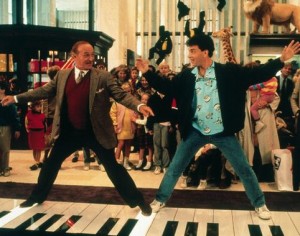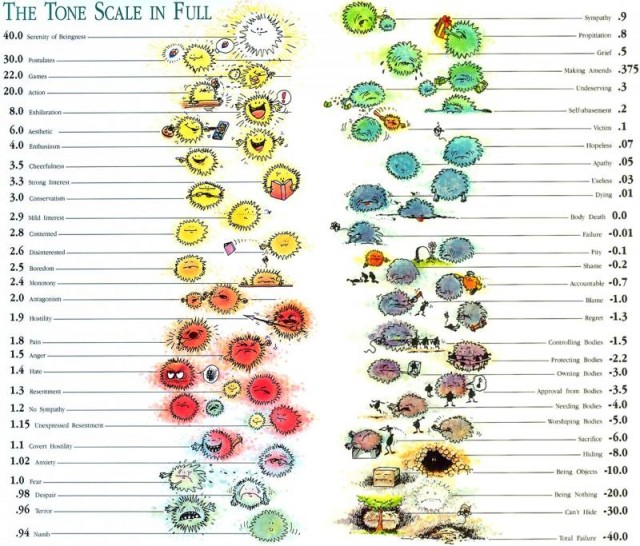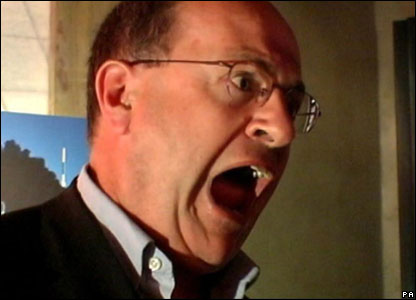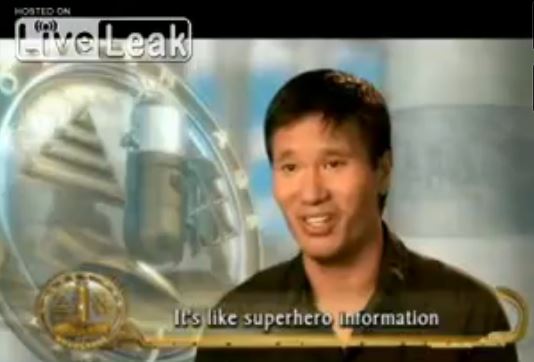 Claire Headley is taking us on our journey to train as Scientologists. She and her husband Marc were Sea Org workers who escaped from Scientology’s International Base in 2005. She spent years working with Scientology’s “tech,” and was trusted to oversee the auditing of Tom Cruise. Go here to see the first part in this series.
Claire Headley is taking us on our journey to train as Scientologists. She and her husband Marc were Sea Org workers who escaped from Scientology’s International Base in 2005. She spent years working with Scientology’s “tech,” and was trusted to oversee the auditing of Tom Cruise. Go here to see the first part in this series.
For the past two weeks, Claire Headley has been helping us explore one of the most important steps that a Scientologist encounters early in his or her career: the PTS/SP course. Last week, we talked about the policy of “disconnection,” which has a tendency to rip apart families. This week, we’ve asked her to focus on another aspect of the course before moving on — we wanted her to talk to us about L. Ron Hubbard’s “Tone Scale.”
As early as his 1950 book Dianetics: The Modern Science of Mental Health, Hubbard was comparing life to a trip up and down a sort of keyboard of emotions. Later, that notion took firm hold in what he called his Tone Scale — a numerical value for determining a person’s emotional state.
CLAIRE: The Tone Scale is what Scientologists use to “read” people.
It is also what Scientologists use to control people in relation to their emotional states. I can say that I’ve seen this used effectively, but as with most things, I can’t say it’s actually unique to Scientology.
To give a specific example: The infamous video of Tommy Davis and BBC journalist John Sweeney. A Scientologist would tell you that Tommy used the Tone Scale to cause Sweeney’s explosion, by bringing Sweeney “up” the scale from 1.1 — Covert Hostility — to 1.5, Anger.
THE BUNKER: Oh, is that what Tommy was doing? What a master manipulator Anne Archer’s son was. How we miss him. As for Sweeney, we saw him recently in New York, and none of his emotional states — Witty, Inquisitive, and Irreverent — show up on Hubbard’s scale, for some reason. What will you find there?
CLAIRE: The Tone Scale runs from 40.0 at the top (Serenity of Beingness) down to Body Death at 0.0 and then all the way down to -40.0, Total Failure.

Learning each of these tone levels was considered an important part of Scientology for a few different reasons.
The first time I studied it and did the drills on it, I wasn’t particularly impressed. I could see some use in being able to communicate to someone appropriately, but that’s pretty obvious.
What struck me about the drills was that I didn’t see the purpose in emanating each of the tone levels, and how could you really do the tone levels that are below “body death”? I didn’t see the point. But as with everything I’d learned in Scientology, I did as I was told.
When patter drills (talking to the wall) became part of Scientology training, learning each tone level was added to the mix.
I’d say, from my experience, the tone level given the most focus is 1.1 — Covert Hostility.
Covert Hostility is portrayed as the person who smiles at you while secretly planning to stab you in the back. The snake in the grass. This particular focus was one of many things that eventually led me to realize there is extreme paranoia at the top of Scientology — specifically what I witnessed by Dave and Shelly Miscavige.
And certainly anyone who leaves Scientology is instantly considered 1.1. This is one of the terms that is heard all the time in Scientology lingo: “He’s 1.1” (pronounced “one-one”). It’s commonly heard at Scientology headquarters.
The focus of auditing (Scientology’s counseling) is to move you up the tone scale.
THE BUNKER: As we’ve pointed out before, this equates to a “gay cure” in Scientology. Homosexuals are considered to be 1.1, and are told to “handle” their orientation with auditing. If they do so, their “tone level” will go up, and they will no longer be gay. Or so Scientologists believe.
CLAIRE: On the PTS / SP course, one does drills where you practice bringing someone up the tone scale, and then bringing someone down the tone scale. The point being to teach you to control the reactions in those around you.
 I think there are two fatal flaws with how the tone scale is used in Scientology. There are many aspects of the scale that are used to “label” people inside and out of Scientology. This isolates Scientologists and leaves them less able to accept today’s world.
I think there are two fatal flaws with how the tone scale is used in Scientology. There are many aspects of the scale that are used to “label” people inside and out of Scientology. This isolates Scientologists and leaves them less able to accept today’s world.
I think another flaw is to try and deal with life in such an insular fashion, reduce everything to black and white. Life just doesn’t go that way. On a personal level, this hit me like a ton of bricks when Marc escaped the compound in Hemet and I was left behind. Of course I was told he was a suppressive person, that I had to disconnect from him. I was told all manner of bad things about him, and had I trusted and believed those labels as I’d been trained to do from age 4, we wouldn’t be having this conversation right now. But that’s a story for another day.
I think a lot of what is covered by the tone scale is simply common sense and is probably covered better elsewhere if I took the time to research this.
For example, I think it’s common knowledge that an angry person will say things they don’t mean.
And certainly there are people who are generally happy and doing well in life, and then there are people who are going through rough patches and aren’t so happy, and there are people who are generally depressed and lethargic.
When I sought therapy during the really tough days of depositions I went through in our lawsuits, I often had to ask my therapist if theories and ideas existed in the real world. I had trouble understanding my thought process and evaluations, which were based on labels from being raised in Scientology. It took me a good length of time to remove those “filters” from my thought process, if that makes sense.
THE BUNKER: We think we know what you mean, Claire. And thanks again for taking us through your Scientology conditioning. Next week, it’s time for the sauna!
——————–
Another Glimpse at a Scientology Bonecracker?
Yesterday, LiveLeak posted a video of Scientologists yammering on about “The Basics” — the 2007 reissue of essential L. Ron Hubbard texts that proved to be such a controversial move by church leader David Miscavige.
The video was a fun glimpse at the way Scientologists try to express themselves about their “wins” and “gains,” usually to hilarious effect.
But about 45 seconds into the video, we had a flash of recognition: wasn’t that a younger Ryan Lee, the chiropractor we recently saw in a viral video cracking the bones of models at his Hollywood clinic?
Here are his lines from the video, which probably came out six years ago: “Just amazing data. It’s like superhero information — it makes you OT.”
Yeah, that’s great stuff. Now take a look again at his viral ad, which featured him standing in front of his Scientology certificates at his chiropractic clinic…
Same guy, right? “Easy on the eyes,” is how he described himself in another video he made for his business. What a superhero!
——————–
Posted by Tony Ortega on May 28, 2013 at 07:00
E-mail your tips and story ideas to tonyo94@gmail.com or follow us on Twitter. We post behind-the-scenes updates at our Facebook author page. Here at the Bunker we try to have a post up every morning at 7 AM Eastern (Noon GMT), and on some days we post an afternoon story at around 2 PM. After every new story we send out an alert to our e-mail list and our FB page.
If you’d like to help support The Underground Bunker, please e-mail our webmaster Scott Pilutik at BunkerFund@tonyortega.org








